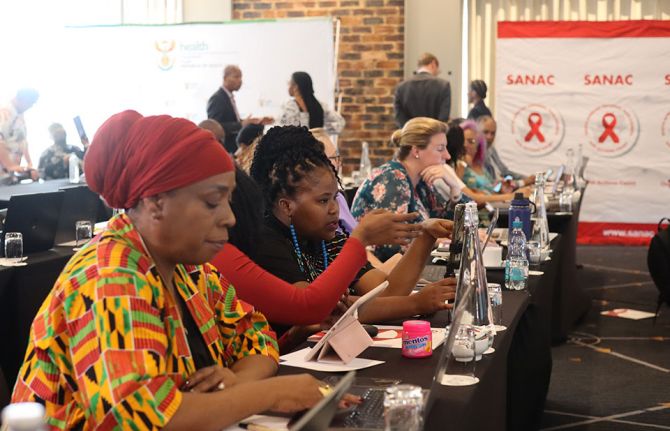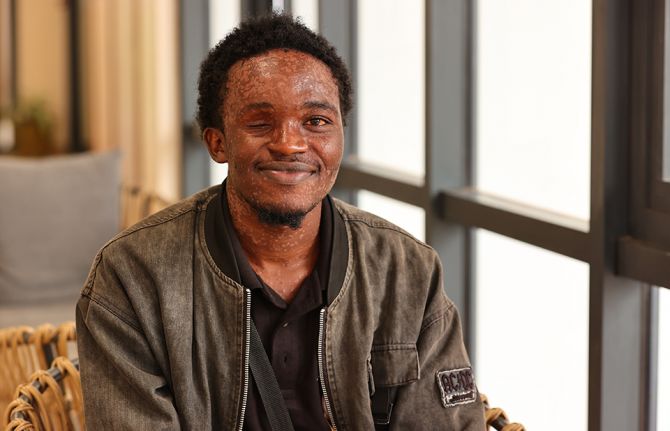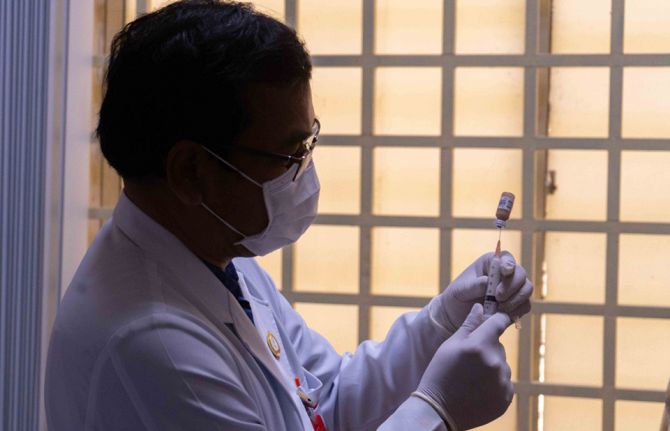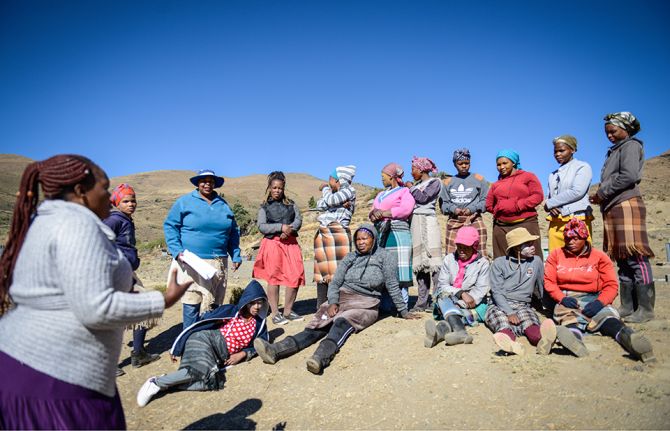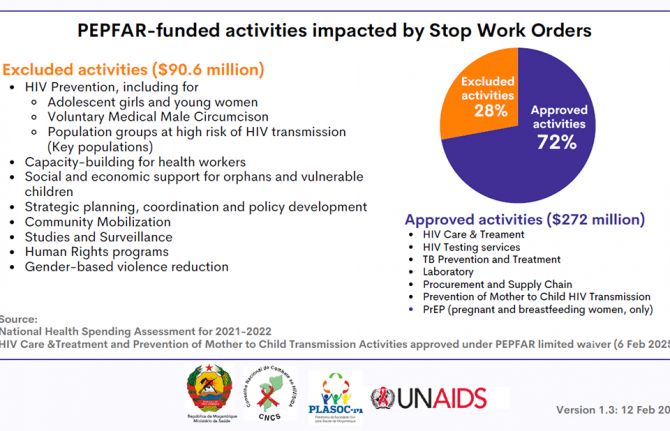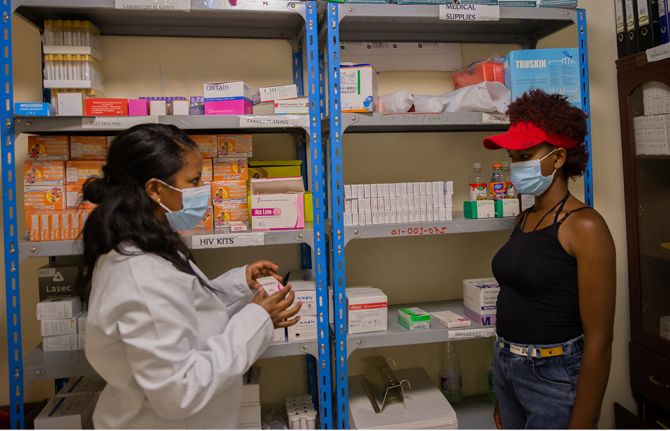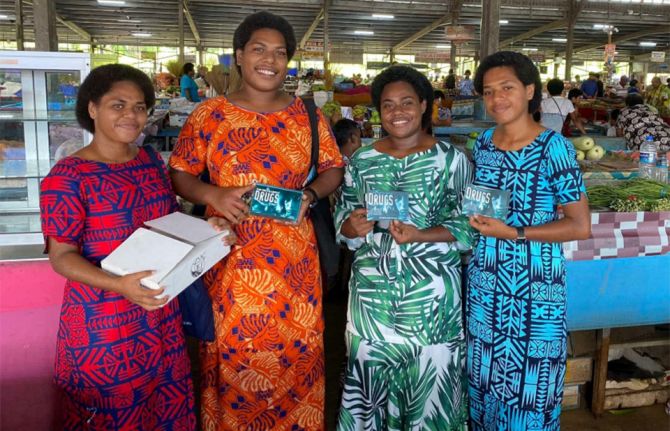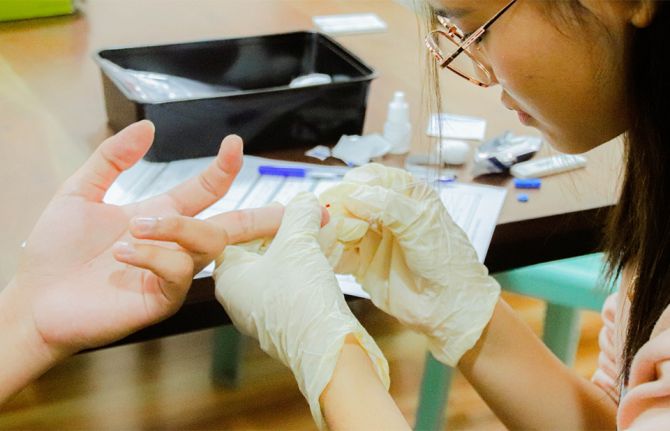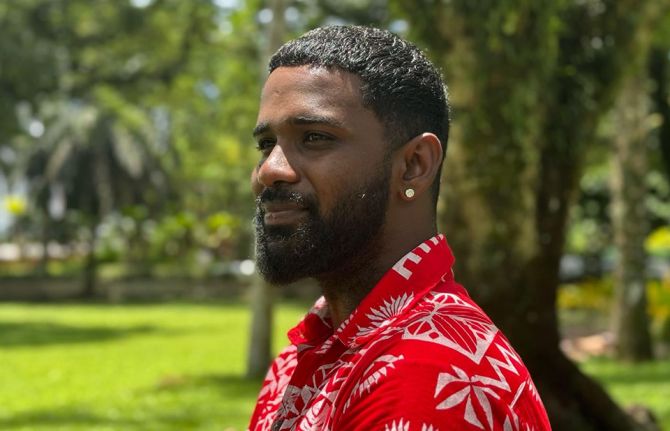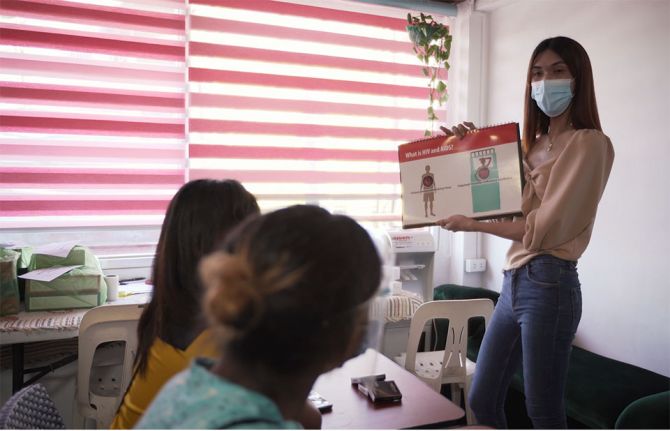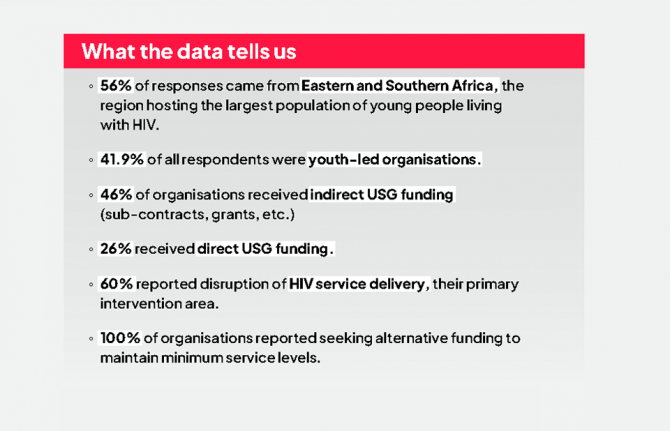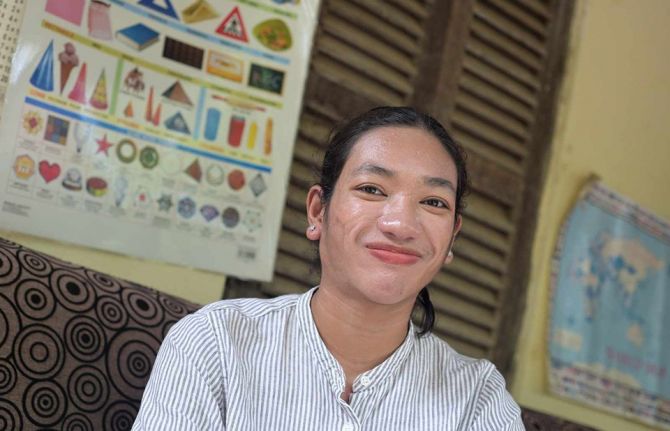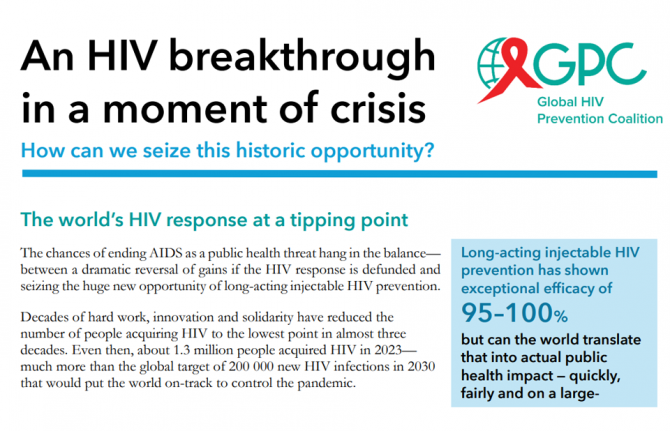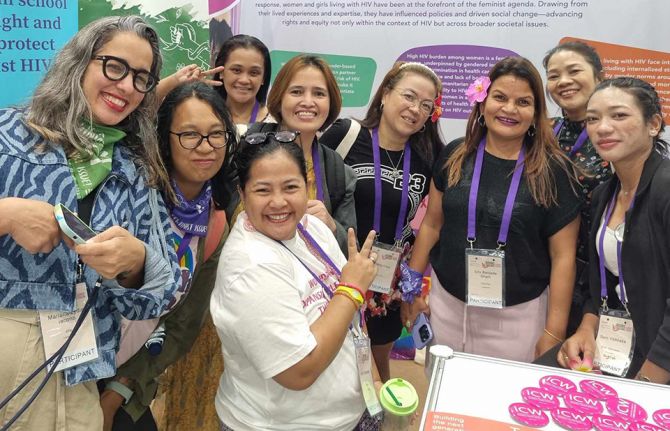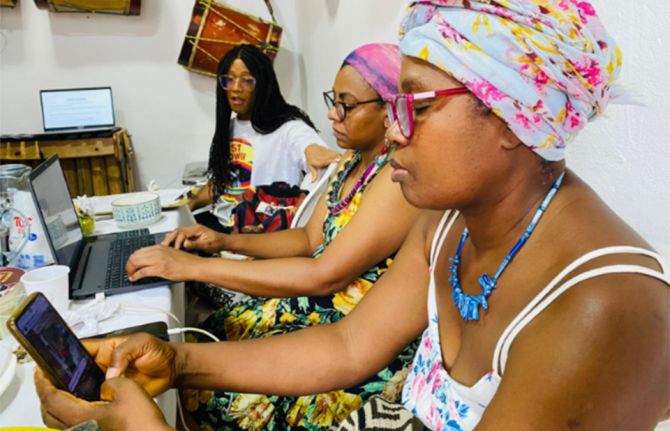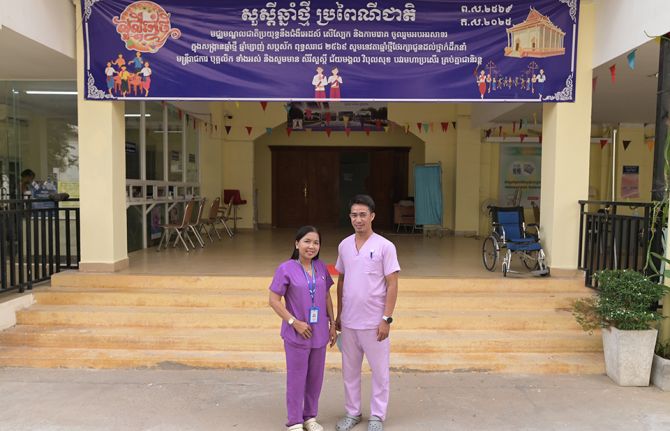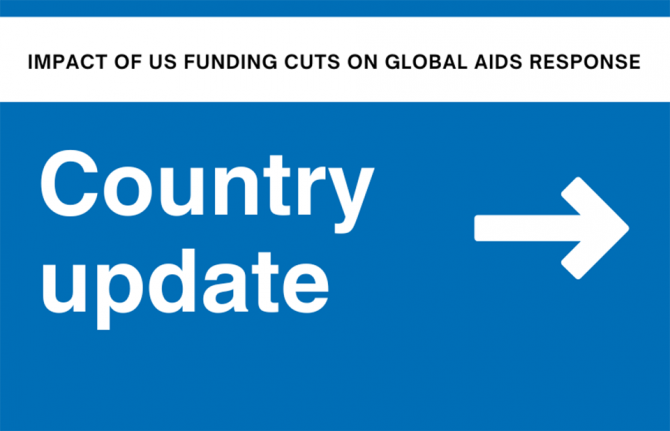

Feature Story
Botswana to revitalize HIV combination prevention
28 August 2018
28 August 2018 28 August 2018The National Coordinator of Botswana’s National AIDS Coordinating Agency, Richard Matlhare, has warned that complacency risks derailing the country’s AIDS response.
“The government is committed to ending the AIDS epidemic,” he said at the Botswana International HIV Conference, which took place in Gaborone, Botswana, from 23 to 25 August. “The new National HIV and Strategic Framework 2018–2023, to be launched later, has positioned HIV prevention as a game-changer to achieve epidemic transition.”
In the 16 years since HIV treatment was first made available in its public health sector—one of the first countries in Africa to do so—Botswana has made significant progress on HIV treatment, with 84% of people living with HIV accessing treatment in 2017. However, fewer gains have been made in the area of HIV prevention, with the number of new HIV infections increasing from 13 000 in 2010 and to 14 000 in 2017.
In the face of these figures, Botswana is making efforts to revitalize its HIV prevention response. It has recently joined the Global HIV Prevention Coalition and the President, Mokgweetsi Masisi, has expressed his commitment to ending AIDS in Botswana. “How Botswana succeeds as a country will impact on the success of the Global HIV Prevention Coalition as a whole,” said Sheila Tlou, Co-Chair of the Global HIV Prevention Coalition, during the opening of the conference.
Efforts to revitalize HIV prevention in the eastern and southern African region include galvanizing high-level political leaders, policy-makers, community leaders, researchers, academic institutions, civil society and development partners for increased accountability and investment in HIV prevention. It requires countries to Fast-Track implementation and service delivery along the five pillars of HIV prevention, focusing on young women and adolescent girls, key populations, condoms, voluntary medical male circumcision and pre-exposure prophylaxis.
“The global AIDS response is at a precarious point. We’ve achieved partial success in saving lives, but these successes are giving way to complacency in HIV prevention,” said Jyothi Raja Nilambur Kovilakam, the UNAIDS Country Director in Botswana.
Region/country

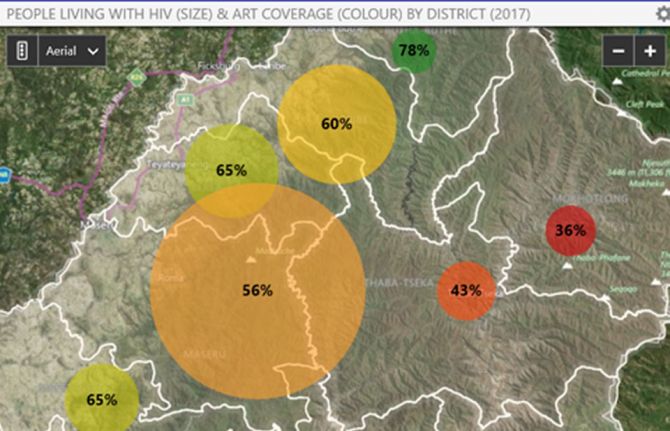
Feature Story
Situation rooms bring actionable data to decision-makers
27 August 2018
27 August 2018 27 August 2018Health situation rooms—software platforms designed to support decision-making on countries’ health responses—are opening up across Africa, bridging data and decision-making in order to improve the health and lives of tens of millions of the world’s most vulnerable people.
Data integration, data warehousing and data visualization are the core of the situation room concept, providing transparent and improved information on a range of diseases. While situation rooms are virtual working space, some countries also use physical rooms in which the analytics can be discussed and acted upon.
The idea of a health situation room is that data—whether on the availability of HIV medicines, the effects of a strike by health-care workers or diagnoses of cervical cancer—are centralized, yet accessible to everyone. Whereas in the past health data on different diseases would be spread around several databases in assorted government ministries, disease-specific organizations, etc., situation rooms collect the data in one place, on one system, in a form that is easily shared. The information held by the situation room can be utilized on tablets or computers throughout the country.
“We must continue to innovate in our response to HIV,” said Michel Sidibé, the UNAIDS Executive Director. “Having reliable and up-to-date information is vital if the world is to meet its commitment to end AIDS and reach the Sustainable Development Goals.”
By pooling the health data in the virtual situation room, better and more focused health services can be made available to the people who need them. For example, having data on specific parts of a city helps to drive a location–population approach to HIV prevention services, ensuring that the right people are reached in the right place with the right services.
Through combining data on, for example, HIV, tuberculosis and cervical cancer, interlinkages between the diseases can be seen and responded to. Data can be viewed in real time, so, for example, levels of HIV medicines can be monitored in order to anticipate and respond to medicine stock-outs. Studying the effects of HIV test and treat campaigns in Uganda, the effectiveness of cervical cancer screening in Côte d’Ivoire and malaria testing and new diagnoses in Zambia are other examples how health situation rooms are benefiting health responses.
Five countries—Côte d’Ivoire, Kenya, Lesotho, Zambia and Uganda—have launched situation rooms. Data on indicators, including on HIV, tuberculosis, malaria, noncommunicable diseases and reproductive, maternal, newborn and child health are gathered, with different countries collecting different information depending on the local situation. Namibia, Mozambique and Zimbabwe are preparing to launch situation rooms, and several other countries are in the planning stage.
As part of its work, UNAIDS has been helping countries to set up their situation rooms, with UNAIDS working with countries to select the specific indicators and connecting data in the country to their situation room. Countries with existing data collection systems, that collect data separated by age and sex and at the local level, that have good Internet connectivity and that have qualified local staff are best placed to establish their own situation rooms.
The situation room programme has resulted in UNAIDS’ support to countries being enhanced, with UNAIDS able to support health information systems in a way unique in the United Nations system. UNAIDS is therefore supporting country and programmatic monitoring in a more meaningful way in those countries that have invested in situation rooms.
“For us, its strength is in bringing multiple data sets together, and sharing powerful analytics in a visual and understandable way,” said Andrew Kashoka, Deputy Director of Information Technology, Zambia Ministry of Health.
For the future, UNAIDS plans to ensure that countries have technical support so that they can continue to operate their situation rooms without support from UNAIDS. UNAIDS will also work with partners, including the Africa Centres for Disease Control and Prevention, the private sector and others, to reduce the dependency of countries on UNAIDS’ support in setting up and running the platforms.
Such investments in technology and collaboration between UNAIDS, governments and partners are driving innovative approaches to responding to AIDS and to ultimately ending the AIDS epidemic as a public health threat by 2030.
Resources

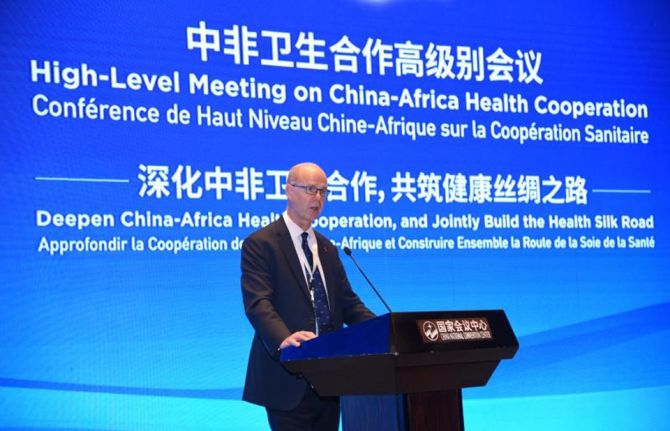
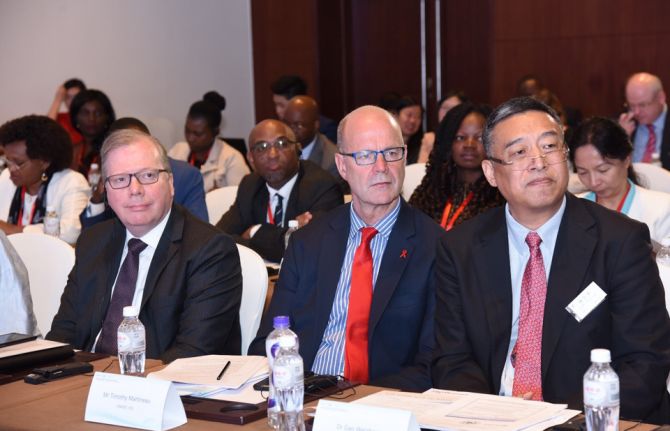
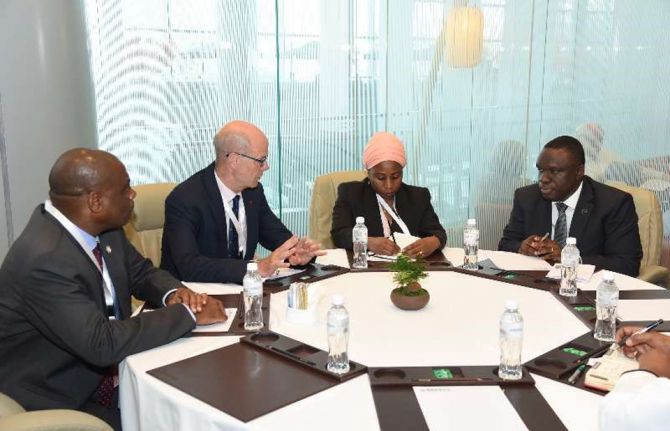
Feature Story
Strengthening China–Africa cooperation
17 August 2018
17 August 2018 17 August 2018African ministers of health, the Chinese Minister of Health and others have examined ways in which China can be instrumental in building capacity for the local production of health commodities in Africa and in strengthening regulatory capacities. The participants met at the 2018 High-Level Meeting on China–Africa Health Cooperation, held on 16 and 17 August in Beijing, China.
Africa is hugely dependent on imported medicines and other health technologies. It is estimated that 70% of the pharmaceutical and medical products market is served by imports. Demand for health commodities is growing rapidly and cannot be met with Africa’s existing manufacturing capacity and sources of supply.
During the event, the Chinese participants learned about African best practices, including the progress made in expanding HIV treatment, responding to the HIV epidemic in rural areas and reducing new HIV infections among children.
“We are creating the enabling environments for investments in Nigeria and closing the gap in supply shortages for essential commodities. Now is the time to stimulate access and increase local production of essential medicines and health technologies in line with our goal of achieving universal health coverage,” said Isaac Adewole, the Nigerian Minister of Health.
The participants signed a six-point document, the China–Africa health cooperation 2018 Beijing initiative, which focuses on building a strong public health surveillance and response system in Africa and supporting the response to public health emergencies. The plan also includes a special focus on strengthening cooperation on HIV prevention, in particularly among young people and key populations.
Region/country


Feature Story
Cities in Philippines pledge to lower HIV infections and improve their track record
14 August 2018
14 August 2018 14 August 2018The League of Cities of the Philippines (LCP) pledged to fast-track the AIDS response in the cities, by signing a partnership agreement with UNAIDS to reduce the number of new HIV infections in the country. The signing event took place on the fringe of the LCP’s 30th anniversary celebrations on 27 July 2018. More than 145 mayors and local representatives from cities attended the event, which included a gala dinner.
UNAIDS’ newly released report, Miles to go: closing gaps, breaking barriers, righting injustices, shows that the annual new infections have more than doubled in the Philippines in the past seven years to an estimated 12,000 in 2017. With a 174% increase since 2010, the Philippines is the country with the fastest growing HIV epidemic in the Asia and the Pacific region. New infections have now overtaken Thailand, Viet Nam and Myanmar, placing Philippines number 5 in terms of new infections in 2018 in the region. Cities and urban areas are particularly affected. Health authorities say that 70 cities, including the 17 cities in metro Manila, accounted for 80% of reported HIV cases in the country.
“The AIDS epidemic in the country is an issue that needs urgent action among local governments, especially since key populations at risk of infections reside mostly in the cities,” said Laarni L. Cayetano, National Chair of the League of Cities of the Philippines.
Most agreed that there is a need to scale-up services tailored to key populations that go beyond female sex workers. More than 90% of new HIV infections are occurring among men who have sex with men (MSM) and transgender people (TG). Condom use among men who have sex with men and transgender people hovers at 50% and 37% respectively and HIV testing is low. Only 16% of MSM knew their HIV status in 2015.
Local governments in the Philippines have earmarked resources and started more innovative HIV prevention services. For example, Quezon City has opened three Sundown clinics (Klinikas) that provide rapid HIV testing and counseling in a non-stigmatizing environment for gay men, men who have sex with men and transgender people. The city has also increased its HIV funding nine times since 2012 and has been urging other provinces to follow suit.
“Philippines has a small window of opportunity to act fast and stop a major HIV epidemic from taking hold,” said Eamonn Murphy, UNAIDS Regional Director for the Asia and the Pacific. He added, “This commitment is achievable if cities where the epidemic is having a big impact take the lead.” He also reaffirmed UNAIDS commitment to work in close partnerships with national and local authorities to support their efforts to bring HIV infections under control and provide technical expertise in how best to invest funds and reach people.
For the National President of the League of Cities of the Philippines, Edgardo D. Pamintuan, time is of the essence. “I strongly believe that if we effectively implement HIV response strategies in our localities though our partnership with UNAIDS, our efforts at the city level can make a significant impact in reaching the country’s targets,” he said.
Fast-Track cities
Region/country
Related

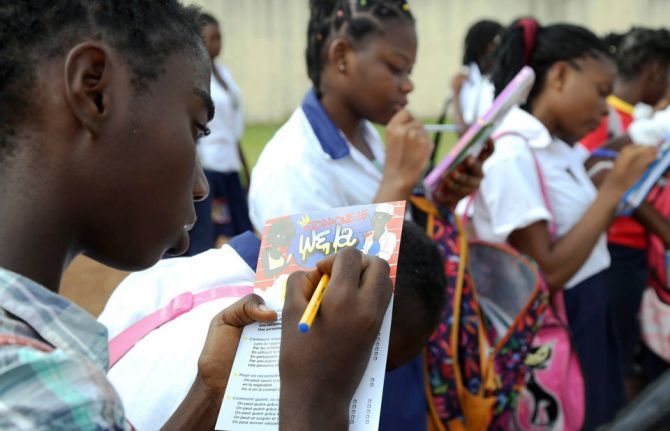
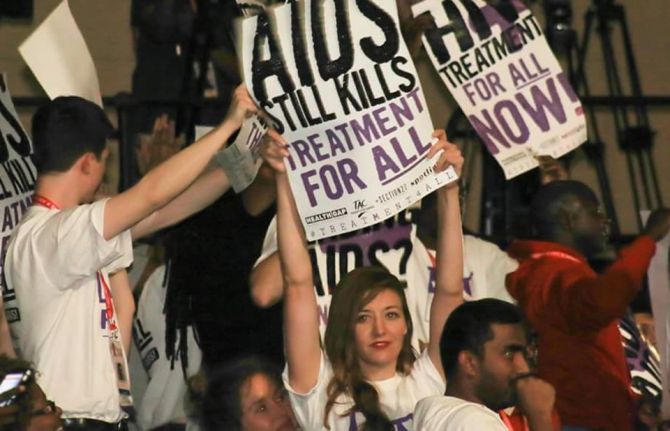
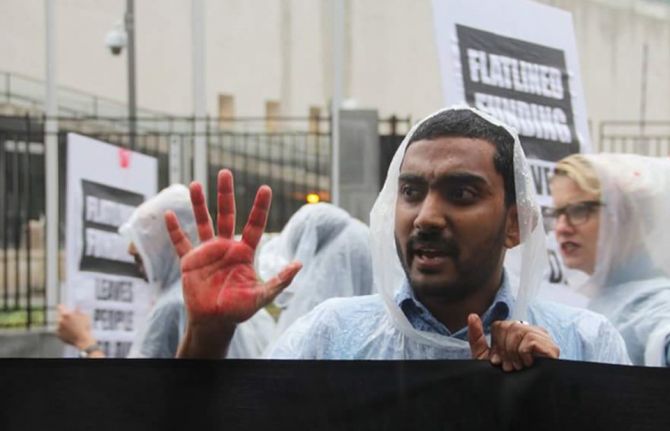
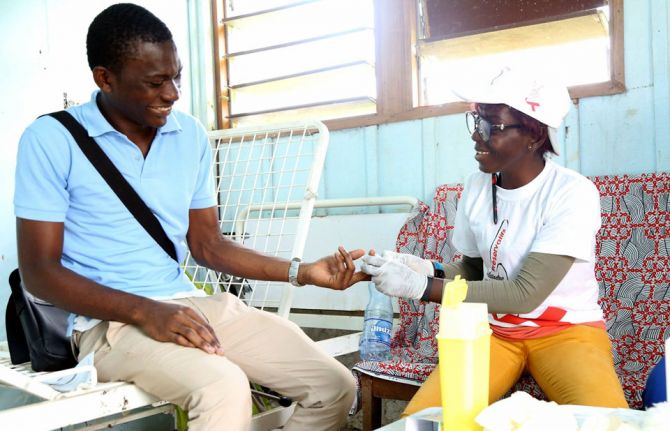
Feature Story
Youth voices count and safe spaces do too
09 August 2018
09 August 2018 09 August 2018A global coalition of more than 80 youth organizations working on HIV (the PACT), and Youth Voices Count (YVC) launched a poll to get a sense of what young people know about sexual reproductive health.
More than half of the 270,000 young people aged 10-24 from 21 countries who responded to the U-Report poll (54% of boys and young men, and 58% of girls and young women) sought HIV and other services at a health centre or clinic in the previous three months. About 36% of young people aged 10-24 who did not seek services reported feeling uncomfortable visiting a health centre or clinic, and more than 28% of young people (both sexes) said they felt scared to seek services.
“Even though we have the most up-to-date tools to end AIDS including ARTs, PeP, PrEP, HIV self-testing, and more, we still experience a huge challenge in ending AIDS among adolescents and young people. The HIV response is not only about pills and testing, it is about creating a friendly space where adolescents and young people feel safe and empowered.”
The poll with support from UNAIDS, UNICEF and UNFPA was complemented by an in-depth survey and interviews led by YVC, which showed that approximately 15% of those who accessed any sexual health services in the past 6 months experienced refusal or mistreatment because of their age, sexual orientation, gender identity or HIV status. And of those who felt mistreated because of their age, 55% identified as gay, bisexual, and 25% identified themselves as living with HIV. Further, 32% of young gay, bisexual men and other young men who have sex with men, and 50% of young transgender people, felt that they had been discriminated against because of their gender identity or sexual orientation. Finally,16% of young people who identified themselves as living with HIV said they had been mistreated because of their HIV status.
“An AIDS-free generation is impossible where exclusion, marginalization, and discrimination have room to flourish and thrive. We can no longer afford to be complacent — these barriers will not be resolved on their own or with the passage of time. Not unless we actively join forces to end them.”
Although healthcare settings should be safe spaces for those receiving care, this is not the case. Policies and attitudes remain barriers to youth-friendly HIV and sexual and reproductive health services. Indeed, 37% of respondents who reported having visited a clinic were not willing to recommend doing so to their peers.
This year’s theme for International Youth Day is Safe Spaces for Youth, highlighting the need of young people for safe spaces to come together, hang out, and participate in decision making processes as well as freely express themselves. This includes in healthcare settings, which should be places of safety and refuge, free from stigma, maltreatment, and violence.
“AIDS is far from over, but it can be if young people are informed, free and able to access services that are safe and responsive to their specific needs.”
Every day, approximately 1600 young people are infected with HIV, while one young person dies of AIDS-related illnesses every 10 minutes. Young women aged 15-24 are particularly affected. In sub-Saharan Africa, young women are twice as likely to be infected with HIV as their male counterparts. And young key populations (including gay men and other men who have sex with men, bisexual people, transgender people, young sex workers and young people who inject drugs) are at a high risk of HIV around the world due to rights violations, discrimination, exclusion, criminalization and violence. Of the young people living with HIV globally, most do not know their status.
Download more slides like this from 2018 Global AIDS Update Miles to Go
Resources
Related
 “Who will protect our young people?”
“Who will protect our young people?”

02 June 2025


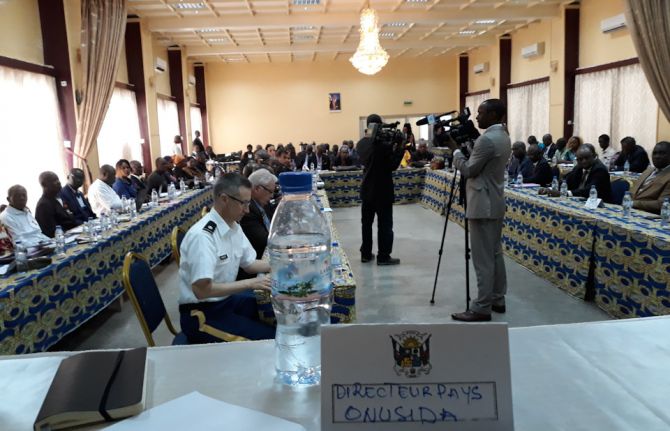
Feature Story
Progress, but still miles to go, to increase HIV prevention and treatment in Central African Republic
03 August 2018
03 August 2018 03 August 2018Some 18 months after the launch of the catch-up plan, the National AIDS Council (CNLS), the Ministry of Health and UNAIDS co-organized a workshop in Bangui, to take stock of the progress and the challenges to accelerate access to treatment for people living with HIV in the Central African Republic. The workshop also served as an opportunity to renew political commitment to the HIV response and to call for urgent action on prevention.
The Prime Minister of the Central African Republic, Simplice Mathieu Sarandji, opened the meeting with 80 stakeholders present, including members of government, civil society organisations, people living with HIV, members of key populations, as well as local governments, traditional and religious leaders.
Key areas of progress since the launch of the catch-up plan in January 2017 included the development of new policies to implement test and treat, and the increase in the number of people on HIV treatment from 25,000 in 2016 to 34,000 in June 2018. Community treatment groups have been delivering HIV treatment to people in remote and insecure regions such as the eastern town of Zemio. In addition, a community treatment observatory is helping monitor access to and quality of HIV care in Bangui.
However, there are miles to go. Less than 35% of people living with HIV in Central African Republic access treatment — this is among the lowest in sub-Saharan Africa. Challenges include an inadequate monitoring and evaluation system, a lack of effective supervision of facilities providing HIV services, limited community engagement to implement HIV testing and treatment, as well as limited financial commitments to reach treatment targets. Most agreed on the need to improve coordination.
As a result, participants identified priorities for the next six months to reach treatment targets for 2019. All stressed that communities, people living with HIV and key populations must be involved every step of the way. In addition, participants stressed the urgent need for increased domestic and donor funding.
A steering committee and technical working groups prepared the two-day workshop based on available data and on-the ground site visits. The groups included representatives from the Ministry of Health, CNLS, community organisations, people living with HIV, international NGOs such as Medécins Sans Frontières and the French Red Cross as well as UNICEF, UNFPA, WHO and UNAIDS.
Quotes
“Our country and government are committed to accelerating the pace of people accessing medicine and to reach the goal of zero new HIV infections. To ensure this, we will fund HIV treatment for an additional 5000 people in 2019. We will also rapidly develop a national HIV prevention plan.”
“It is time to go faster with our catch-up plan. We must change our approaches, build on progress and adapt when necessary to reach our goals. Our objective is to focus on the communities where people are most vulnerable to HIV infection and to provide them with effective services that respect human rights.”
“We will not put more people on treatment and reduce new HIV infections without involving us. Stigma and discrimination remain serious barriers to our efforts. This is why people living with HIV want to play an active role in encouraging HIV testing, prevention and treatment for all.”
Region/country

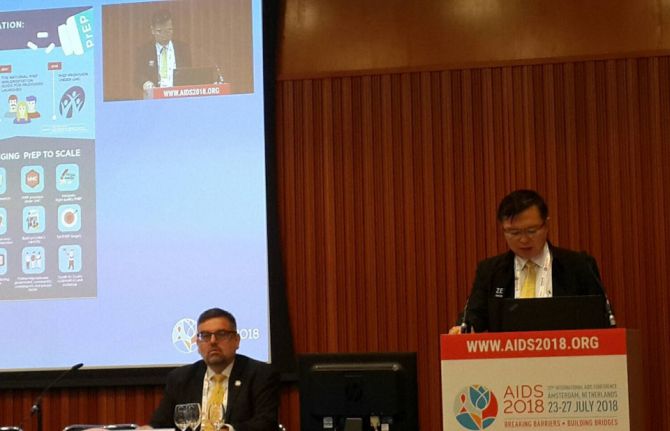

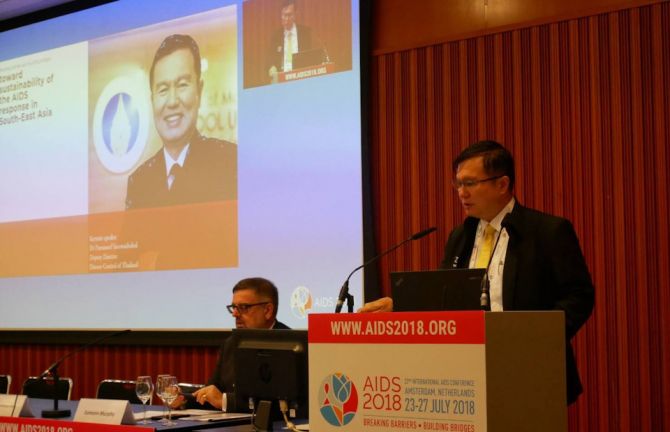
Feature Story
Thailand brings PrEP to scale
01 August 2018
01 August 2018 01 August 2018Thailand is starting to roll out pre-exposure prophylaxis (PrEP) for HIV prevention among key higher-risk groups in high burden provinces, scaling up PrEP pilot projects within the national health system. The announcement was made at the satellite session “Breaking barriers and building bridges toward sustainability of the AIDS response in South-East Asia” during the International AIDS Conference in Amsterdam, Netherlands.
At the session, Dr Panumard Yarnwaidsakul, Deputy Director-General of the Department of Disease Control, Ministry of Public Health, said that the country is moving from trials and demonstration projects to policy and practice. PrEP now is a core part of the combination prevention package in the national HIV response in the country. Mr Yarnwaidsakul added that Thailand is also in process of including PrEP provision as part of the benefits package under the country’s universal health coverage.
As with many countries in Asia and the Pacific, Thailand's epidemic is focused among gay men and other men who have sex with men, transgender people and people who use drugs. The representatives of the Thai government acknowledged that PrEP is cost-effective and is an innovative approach for people at substantial risk of HIV infection.
Randomized trials have demonstrated that PrEP can decrease HIV incidence among at-risk populations, including men who have sex with men and sero-discordant couples. It has been shown that offering PrEP can encourage more people at higher risk to attend HIV clinics, undergo HIV testing and access either PrEP or treatment depending on the test result.
In Thailand, the discussion about offering PrEP at scale started in 2010.
The satellite session learned from "The Princess PrEP", a successful key population-led PrEP initiative under the support of Her Royal Highness Princess Soamsawali and PEPFAR/ USAID LINKAGES Thailand project.This effort served as local evidence to support the development of PrEP roll-out, where key population-led health services are a critical component.
As a next step, the Ministry of Public Health aims to train health care workers and key population peer providers to deliver PrEP.
Quotes
“We hope that other countries can learn from Thailand so that they can move faster. Don’t wait too long. Delayed roll-out of PrEP means more new HIV infections and slower progress to ending AIDS.”
"Thailand’s move comes at a critical time to revamp HIV prevention efforts in Asia and the Pacific. The Thai experience and evidence invigorate the HIV response and teach and inspire other countries to move quickly to introduce PrEP and move away from small scale pilots."
Region/country

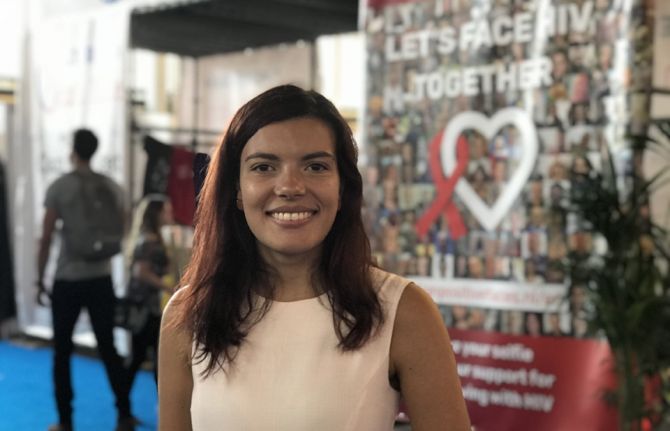
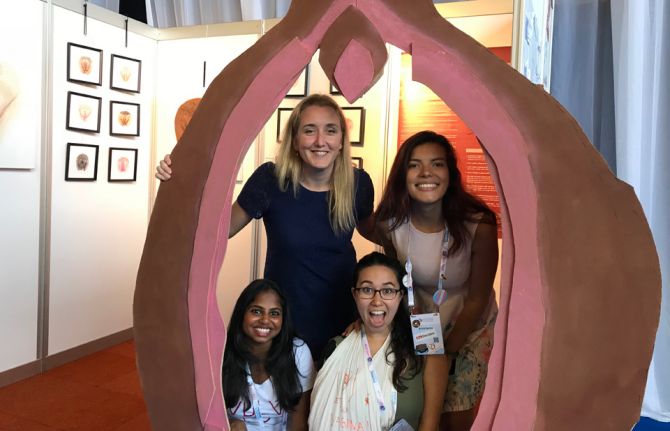
Feature Story
'Nothing for us, without us,' hammer young people at AIDS Conference
31 July 2018
31 July 2018 31 July 2018Sitting on center stage, clutching a microphone, Chinmay Modi along with a dozen young people answered questions about HIV during an all-youth panel session at the Amsterdam 2018 AIDS conference.
The 25-year-old born with HIV described his struggle accessing services. "In India, sex is a big taboo. A 16-year-old cannot buy condoms for example and parents need to give consent to be tested for HIV." He said educating children and parents is key. His greatest desire involves pushing for specific youth-focused services.
Dany Stolbunov from Ukraine echoed that sentiment, saying "Nothing for us, without us." He said that in his region stigma and discrimination kept people from even accessing services. He bemoaned the fact that young people in Ukraine have limited information and are not seen as a priority.
HIV FACTS
In 2017, there were approximately 250 000 new HIV infections and 38 000 AIDS-related deaths among adolescents and 1.8 million adolescents living with HIV globally.
Adolescent girls in sub-Saharan Africa are disproportionately affected by new HIV infections, making up 56% of new HIV infections among adolescents globally.
HIV is a leading cause of death among adolescents (10-19 years).
"We are ready to fight for our rights," he added, explaining that young people have a voice and want to use it.
Bruna Martinez strongly believes that broad sexual education discussing gender, health issues and pleasure would not only limit stigma, it would also make teenagers fear HIV less.
"HIV should not be in a vacuum," she said. "We are a generation that can discuss sex and that's a great thing; so give us the tools that tip things in our favor."
All agreed that teenagers and young people have the most at stake in ending the HIV epidemic. Their demand is clear: go beyond scholarships by empowering us.
Melodi Tamarzians, the Dutch youth ambassador for sexual and reproductive health and rights, said, "Do not tick the youth box by giving us a token position." In her view, to enable young people, adults need to invest in them and give them advisory roles.
AIDS 2018 prided itself on giving a greater space to young people in Amsterdam. Youth and junior investigators made up more than one-third of the submissions presented at the conference, according to the conference organizer, the International AIDS Society (IAS.) In addition, young people got the most scholarships than at any other conference. And the Global Village (a free admission space by the conference area) featured the largest space conceived of and run by young people. It included a snack area, a mini-indoor football field, a safe-space theater area and youth-led activities, and booths such as a radio recording area, a youth against AIDS t-shirt stand and even an exhibit about the vagina.
Ms Martinez volunteered and then worked with the Amsterdam Youth Force that mobilized and organized other young people to make the youth space their own. "At this conference, we showed everybody that we could deliver," she said.
She hopes that this meaningful youth presence will carry over. "It's important that we are not being catered to but rather that we are recognized," she said, her AIDS 2018 lanyard laden with pins and stickers. She sees her recent stint with the Youth Force as a way to change things. "There are still so many young people getting infected with HIV and dying. It means we are failing and the system is not working," Ms Martinez said. In her view, HIV policy has to also come from the ground upwards. She emphasized peer-to-peer education and valuing local knowledge. Standing in front of a huge 'Let's face HIV together' she said, "We speak the language of the young people and we know what we are living, so acknowledge us fully."
The Youth Booth at the Global Village in Amsterdam

Feature Story
We can no longer ignore girls who become brides
26 July 2018
26 July 2018 26 July 2018Worldwide every year, 12 million girls under the age of 18 years are married—that's equivalent to 23 girls every minute. Married too soon. Their personal growth, health and fundamental rights and freedoms denied. Gender inequalities and gender-based violence force thousands of girls into marriage and motherhood. Girls with no education are three times as likely to marry by the age of 18 years as those with a secondary or higher education. And girls who marry before they are 15 years old are 50% more likely to face physical or sexual violence from a partner.
Child marriage often means that girls find it difficult to negotiate safer sex with their husbands, who are commonly older and more sexually experienced, making the girls especially vulnerable to HIV and other sexually transmitted infections.
UNAIDS’ latest report, Miles to go, highlights the reality that adolescent girls and young women aged 15–24 years, particularly those from sub-Saharan Africa, are being left behind. Every week, more than 6600 adolescent girls and young women become newly infected with HIV, with sub-Saharan African women and girls bearing the brunt, accounting for one in four HIV infections in 2017 despite being just 10% of the population.
Girls Not Brides, the Global Fund to Fight AIDS, Tuberculosis and Malaria, the Ministry of Foreign Affairs of the Netherlands and UNAIDS hosted a panel discussion on the issue of child marriage at the International AIDS Conference in Amsterdam, Netherlands, bringing together panellists from across regions, sectors and generations. Monica Geingos, the First Lady of Namibia, was a special guest speaker.
When girls and women are empowered with rights and given equitable access to education, enabled to participate fully in the labour force and equitably represented in government and decision-making bodies, the benefits far outreach improving the lives of the individual woman. Their families, communities and countries thrive. Yet, more than 150 million girls will become child brides by 2030.
The panellists highlighted the need to tackle the underlining determinants behind both HIV and child marriage. They emphasized the need for a comprehensive multisectoral and resourced approach. Gender inequality and harmful social norms have to be challenged. The solutions, they said, include keeping girls in school, providing health services that serve young people’s needs and mobilizing families and communities, including men and boys.
Quotes
“A lot of times it's about economic survival, so for there to be collective progress, we will not go anywhere without structural changes.”
“Invest in youth and enable us by empowering us with decision-making roles.”
“You can’t just take packaged programmes into communities. You need to spend the time to get to know people and work with them to figure out how to tailor these programmes.”
“It is sad that a lot of the responses to HIV are still heavily biomedical. Prevention is underresourced, particularly concerning structural issues, such as child marriage, which are harder to programme around and demonstrate impact.”
“We can no longer ignore these girls, which is why I am delighted we are having the difficult conversations we need to have, and finding solutions.”

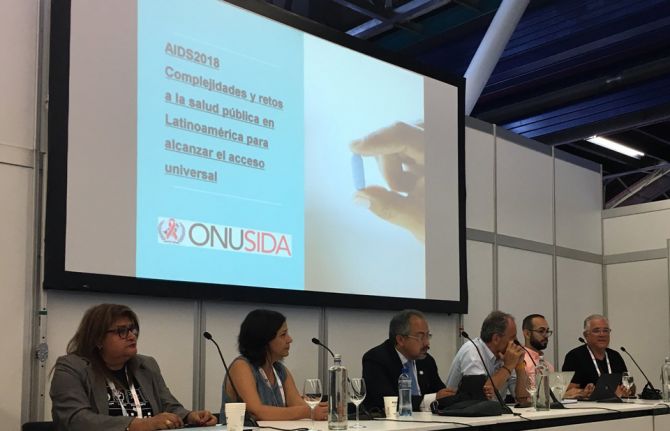
Feature Story
Sustaining the HIV response in Latin America
26 July 2018
26 July 2018 26 July 2018Antiretroviral stock-outs are a serious public health problem in the Latin America region and represent an important risk to the sustainability of the HIV response, according to participants at AIDS2018.
On July 26, a session titled Sustainability of the response to HIV in Latin America; factors that impact access to drugs and health supplies addressed and analyzed the magnitude, the structural causes and the impact of stock-outs on the sustainability of the HIV response in Latin America. Participants discussed strategies to pave the way forward and highlighted best practices on joint purchases of antiretroviral (ARV) treatment like the PAHO/OMS strategic fund, which has helped prevent stock-outs.
In Latin America, one of the most important achievements in the HIV response has been the recognition that accessing HIV treatment is part of the right to health in the public health system, resulting in an increased number of people receiving antiretroviral treatment in recent years. However, a major challenge to fulfill the right to health is to guarantee uninterrupted supplies of ARV drugs and other essential health commodities.
According to the Pan American Health Organization (PAHO), in 2012 45% of the countries reported at least one stock-out episode; the figure had been 54% in 2010. Although some improvements are seen from 2010 to 2012, the region is still experiencing a high frequency of stock-outs.
Shortages of ARVs and other essential supplies result in changes and interruptions in patient treatment, threaten the lives of people with HIV and hamper the reduction of new HIV infections and AIDS-related deaths.
Participants at the session stressed the need for greater health system strengthening and joint procurement processes, including the incorporation of TRIPS flexibilities to reduce ARV costs, aligned with policies for simplified treatment regimens. According to participants, all these factors are essential to prevent and respond to stock-outs of ARVs and medical supplies.
Quotes
“Situations of stock affect the adherence to treatment, and consequently increases morbidity and mortality through opportunistic infections/diseases. It is fundamental and urgent the increase of public financing to increase the budget for prevention and treatment. The purchase mechanisms should be efficient and timely”
“Latin America continues to be the region with the highest coverage rate of antiretroviral treatment. About 1.1 million people in the region were accessing treatment in 2017, which represents 61% of people living with HIV. To close the gaps, it is key to Improve the management of national programs and planning so there are no stock-outs of medication.”
“Policies on access to generic medicines continue to be one of the key strategies for improving access to medicines, together with the strengthening of systems for the management and use of regional drug procurement mechanisms, including the PAHO Strategic Fund.”
"70% of countries have been or have been at risk of interruptions in delivery of drugs and / or supplies in the past 2 years. The main identified causes were related to the management of supplies "
“Civil society has been playing a key role in the monitoring and auditing public management and procurement in order to ensure universal access to health. And we can improve this work by using several tools that are available in different countries of our region such as the law that guarantees access to public information, follow-up of public procurement (including e-procurement) and open parliament.“

